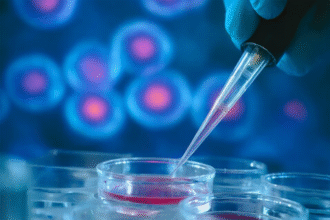Infectious Diseases Overview
Infectious diseases arise when pathogenic or opportunistic microorganisms enter a host, multiply, and cause tissue injury directly (toxins, invasion) or indirectly (immune dysregulation, loss of microbiome balance). More than 500 known agents can infect humans, spanning bacteria, viruses, fungi, and parasites.
- Key Definitions
- Pathogen Categories (Representative Examples)
- Infection vs. Contagion
- Agent–Host–Environment Triad
- Microbiome and Colonization Resistance
- Opportunistic Pathogens (Conditional Pathogens)
- Outcomes of Host–Pathogen Interaction
- Factors Shifting Balance Toward Disease
- Prevention Levers
- Key Takeaways
Key Definitions
- Infection: successful entry, survival, and multiplication of a microorganism in a host (may be asymptomatic).
- Disease: clinical signs/symptoms resulting from infection‑induced damage or host responses.
- Communicable (contagious) disease: an infectious disease transmissible between hosts via defined routes and capable of causing outbreaks (e.g., measles). All contagious diseases are infections, but not all infections are contagious (e.g., tetanus, many opportunistic infections).
- Opportunistic infection: disease caused by normally low‑virulence or commensal organisms when host defenses are impaired or microbiome barriers disrupted.
Pathogen Categories (Representative Examples)
- Bacteria: Streptococcus pyogenes, Mycobacterium tuberculosis, Escherichia coli.
- Viruses: Influenza virus, HIV, SARS-CoV-2.
- Fungi: Candida albicans, Aspergillus fumigatus.
- Parasites: Plasmodium falciparum, Giardia lamblia, Toxoplasma gondii.
Infection vs. Contagion
| Aspect | Infection | Communicable Disease |
|——–|———-|———————-|
| Core concept | Microbial presence/multiplication | Infection transmissible between hosts |
| Symptoms required? | No (can be silent) | Often, but carriers may be asymptomatic |
| Public health focus | Clinical care + source control | Surveillance, isolation, vaccination, outbreak control |
| Examples | Colonization with Candida; latent TB | Pertussis, influenza, measles |
Agent–Host–Environment Triad
- Agent (pathogen): virulence factors (toxins, adhesion molecules, immune evasion strategies) determine invasion and damage.
- Host: innate and adaptive immunity, genetics (e.g., CCR5, HLA types), age, comorbidities, nutrition, microbiome integrity.
- Environment: sanitation, crowding, climate, healthcare access, vectors, socio‑behavioral factors.
Disease emerges when a sufficient infectious dose coincides with susceptible host factors within an enabling environment.
Microbiome and Colonization Resistance
Commensal microbiota (gut, skin, respiratory, urogenital) compete with pathogens for nutrients and niches, produce inhibitory substances, and modulate immune tone (e.g., short‑chain fatty acids shaping regulatory T cells). Antibiotic overuse diminishes diversity (dysbiosis), enabling expansion or invasion by pathogens like Clostridioides difficile or Candida.
Opportunistic Pathogens (Conditional Pathogens)
Ordinarily harmless or contained organisms become pathogenic when:
- Immune suppression (HIV/AIDS, chemotherapy, high‑dose steroids, transplant immunosuppressants).
- Barrier disruption (catheters, burns, mucositis).
- Microbiome disruption (broad‑spectrum antibiotics, critical illness, malnutrition).
- Ectopic translocation (gut flora entering urinary tract → E. coli UTI; oropharyngeal flora aspirated → pneumonia).
Examples: Pneumocystis jirovecii pneumonia in AIDS, invasive candidiasis in ICU patients, Pseudomonas aeruginosa infections in neutropenia, cytomegalovirus reactivation post‑transplant.
Outcomes of Host–Pathogen Interaction
- Elimination (innate/adaptive immune clearance).
- Asymptomatic carriage (e.g., nasopharyngeal colonization with Neisseria meningitidis).
- Latency (e.g., HSV, TB) with potential reactivation.
- Acute disease → recovery with or without sequelae.
- Chronic persistent infection (HBV, HCV, HIV) with long‑term complications.
Factors Shifting Balance Toward Disease
- High inoculum exposure.
- Enhanced pathogen virulence (toxin or resistance acquisition).
- Host immune deficit or dysregulation.
- Environmental stressors (crowding, poor ventilation, inadequate sanitation, climate shifts expanding vector habitats).
Prevention Levers
- Vaccination (measles, HBV, HPV, pneumococcal, influenza, etc.).
- Antimicrobial stewardship (preserve microbiome, reduce resistance pressure).
- Infection control (hand hygiene, PPE, environmental cleaning, safe device use).
- Vector control and sanitation (water quality, waste management, insect control).
- Post‑exposure prophylaxis and screening (HIV, HBV, TB in high‑risk settings).
Key Takeaways
- Not all infections are communicable; public health strategies depend on transmission potential.
- The microbiome is an active defense layer; its disruption predisposes to opportunistic disease.
- Opportunistic infections reflect a shift in host or environmental conditions rather than new pathogen introduction.
- Multi‑layered prevention addressing agent, host, and environment is essential for durable control.
Educational information only; consult clinical and public health guidelines for diagnostic and management decisions.







